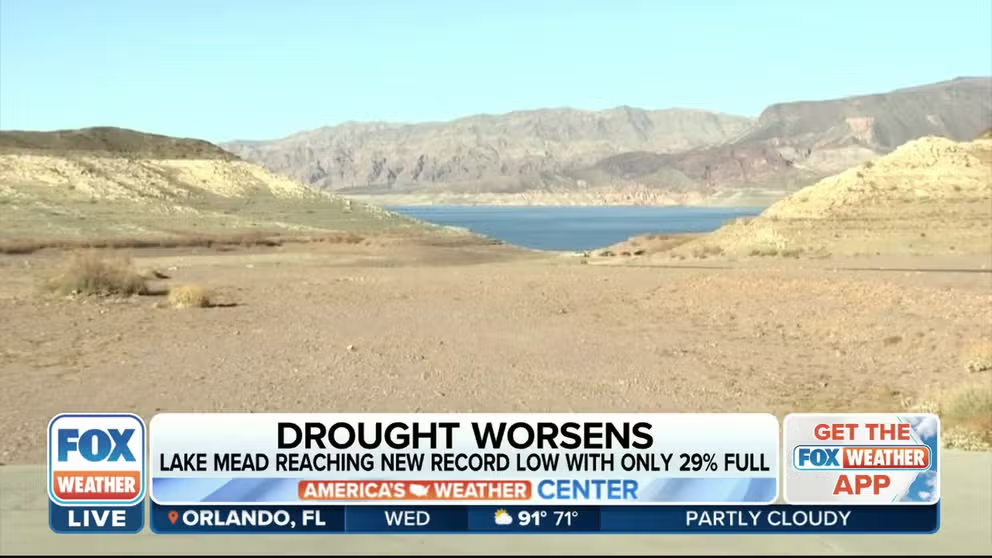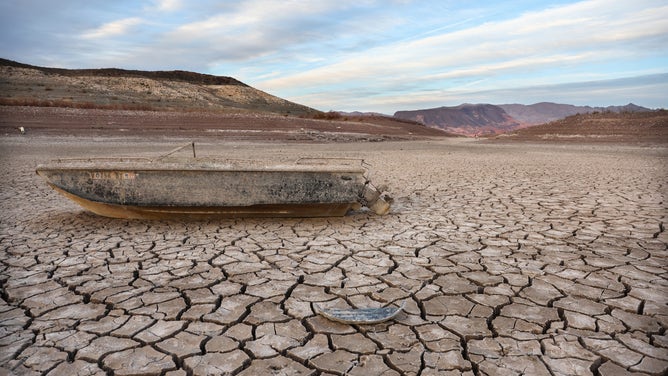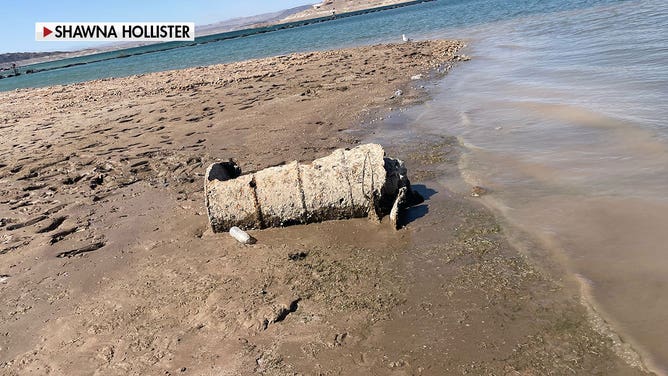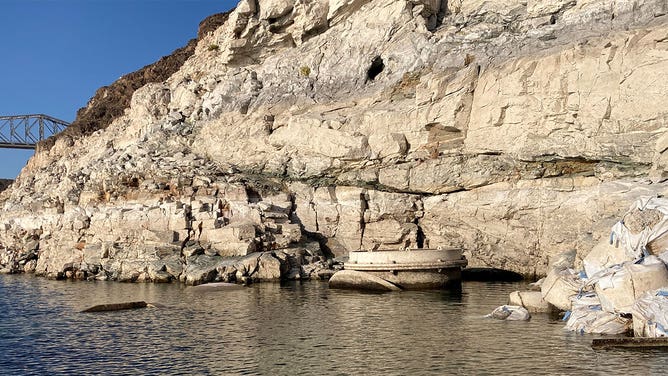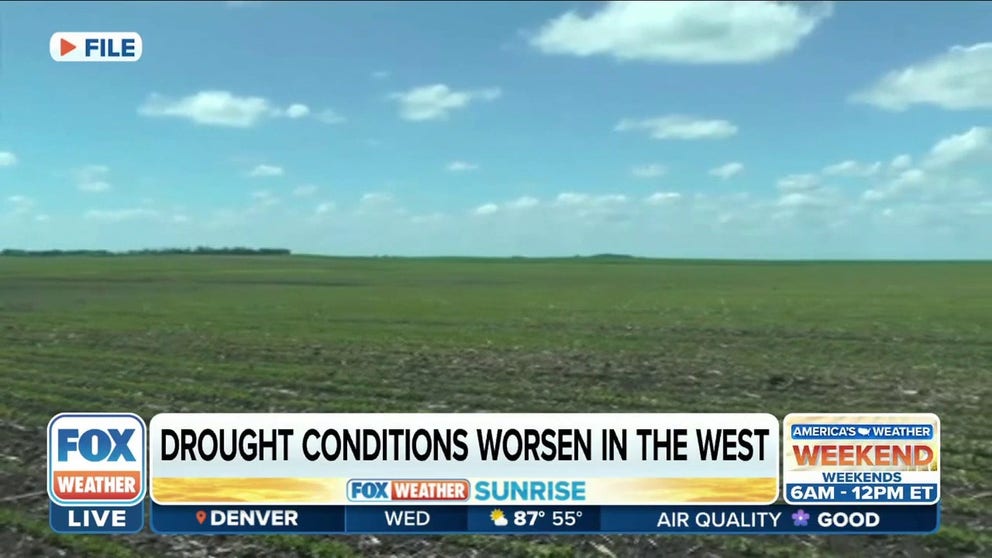Robbing Lake Mead of water: The emergency plan aimed at keeping water flowing to the West
The largest reservoir in the U.S. hits a new record low level every day. How can the government help the 25 million people that depend on it?
Lake Mead at lowest level in history
Some monsoon moisture is making its way to the Colorado River which feeds Lake Mead but Hoover Dam operators worry that they may have to soon pull the plug on the power plant.
On nearly a daily occurrence, Lake Mead drops to a new record low level, but this is part of the plan. The U.S. Bureau of Reclamation (BOR) ordered an increase to the water level for Lake Powell which would send less water down the Colorado River into Lake Mead.
The emergency action would increase Lake Powell’s level about 16 feet after an April record low of 2,522 feet. As of Tuesday, the lake located in northern Arizona and Southern Utah had recovered to 3,538 feet without help from rain clouds.
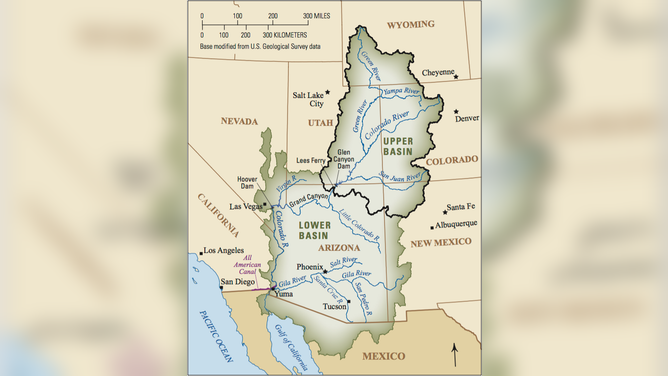
The Glen Canyon Dam forms Lake Powell and the Hoover Dam forms Lake Mead.
(U.S. Geological Survey)
The bureau will release more water from dams around the Wyoming/Utah border to prop up water levels in Lake Powell over 12 months (about 500,000 acre-feet). And they will release less water (by 480,000 acre-feet) through the Glen Canyon Dam at Lake Powell.
"At this time, it is more critical to keep the elevations up and in Lake Powell than Lake Mead," said Patti Aaron, Public Information Officer for the BOR.
Lake Mead is the largest reservoir in the country and Powell is the second largest. They are two of the many reservoirs built on the Colorado River to store water for western states to provide the resource during wet and dry times.
"[Lake Powell] serves as a ‘bank account’ of water that is drawn on in times of drought," states the BOR website. "This stored water has made it possible to successfully weather extended dry periods by sustaining the needs of cities, industries, and agriculture throughout the West."
The decision is tough for many to understand as we see shocking video after video of desiccated fish lying on a cracked lake bed, a body stuffed in a barrel that was once underwater and now previously sunken boats are blocking channels or high and dry. Visitors can see one of the water intakes that supplies 90% of Las Vegas with water above the surface.
BARRELED BODY COULD BE FIRST OF GRUESOME DISCOVERIES TO COME AT LAKE MEAD AS DROUGHT WORSENS
Seven states and Mexico depend on water and power generated from the Colorado River. And, keeping the water flowing is a tricky balance, managed by the BOR. ‘Mega drought’ makes the job tougher. A study in the journal Nature showed that the years 2000-2021 were the driest 22-year period in the Southwest U.S. in modern history.
ONGOING 22-YEAR DROUGHT IN WESTERN US IS DRIEST PERIOD IN OVER 1,200 YEARS, STUDY FINDS
Lake Mead continues to break records for low levels. Wednesday’s record low hit 1,043 feet. This level is only 93 feet from pulling the plug on the power plant. Already the smaller pool reduced power output by 13% of Hoover Dam's hydroelectric plant.
‘IT’S A DIFFERENT LAKE EVERY TIME'; SUNKEN BOATS EMERGE FROM DWINDLING LAKE MEAD

Lake Mead is a fraction of the size it was last year, also a drought.
(FOX Weather)
"The water delivery is the primary issue," said Aaron adding that power generation and recreation were secondary byproducts of the BOR’s goals.
Mead loses 3-4% of its water to evaporation every year. Aaron said that the lake goes down about a foot a week from spring to November which is irrigation season. If the lake hits 895 feet, the river stops flowing and is considered to be a dead pool.
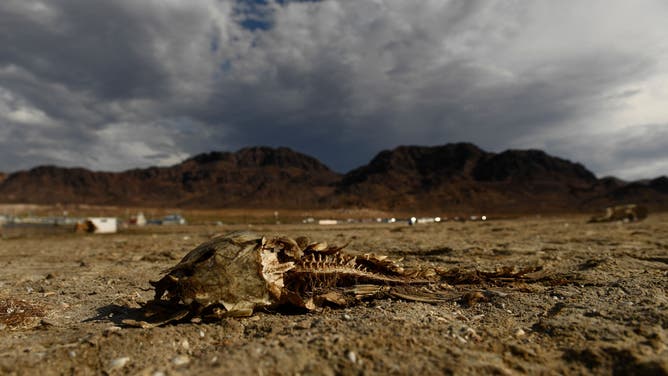
A fish trapped as waters receded in Lake Meade.
(PATRICK T. FALLON/AFP via Getty Images / Getty Images)
"But people are working to make sure that that doesn't happen. Not delivering water to 25 million people is not an option," said Aaron about the population depending on Mead’s water Dam. "So they're working to find ways to make sure that we won't hit dead pool at either reservoir."
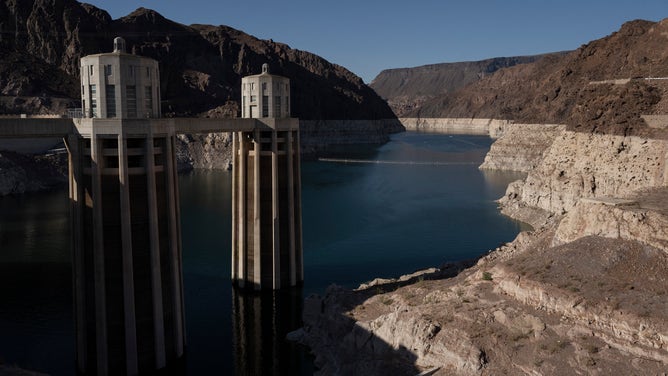
A growing pale high-water mark known as a "bathtub ring" is seen on the shoreline of Lake Mead at the Hoover Dam near Las Vegas, Nevada.
(BRIDGET BENNETT/AFP via Getty Images / Getty Images)
Forty million Americans rely on the entire Colorado Basin for water. And the Colorado River irrigates 25% of the nation’s food grown on about 2 million acres of farmland. Up to 70% of the water through the Hoover Dam goes to agriculture.
"It increases the cost of food. This hits families in the West and across the country who can afford it the least," testified Wyoming Senator John Barraso, in a Capitol hearing about dwindling water supply in the West. "[They] Can't afford a grocery drought tax on top of all of that, which is going to clearly bust family household budgets even further."
The Energy Information Administration expects the 15% of power California gets from hydroelectric sources to drop to 8% because of the drought. FOX Business’ Kelley O’Grady reported the reduction would force the Golden State to import more energy and lead to a 5% increase in wholesale prices across the West.
Extreme drought threatens food supply and power
Lake Meade is dangerously close to "dead pool" level which would mean the Hoover Dam would stop producing energy. Farmers in California's Central Valley, an area that grows a quarter of America's food, may have to stop or curb production due to lack of water.
Currently, the Hoover Dam sells power to Nevada, Arizona and California – enough to supply 1.3 million people. The Glen Canyon Dam at Lake Powell provides power to Wyoming, Utah, Colorado, New Mexico, Arizona, Nevada and Nebraska.
Californians have already seen an increase in water prices and surcharges.
STOP THE SPRINKLERS OR PAY FINES IN PARTS OF CALIFORNIA
The U.S. Geological Survey (USGS) estimated water use per day per state in 2015. This includes all uses like power generation, agriculture, industrial and public supply.
Daily water use:
- California: 20,000 to 28,000 million gallons
- Arizona: 5,000 to 10,000 million gallons
- Nevada: 2,000 to 5,000 million gallons
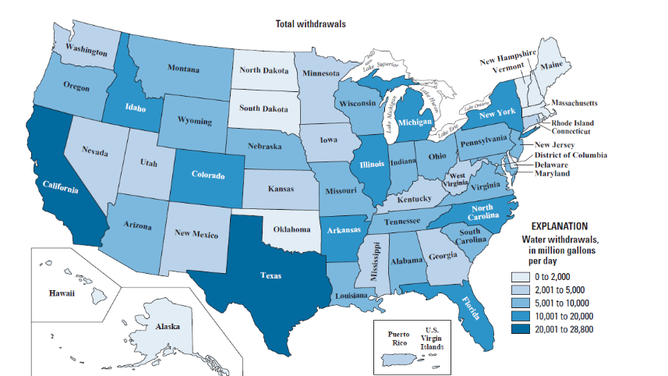
The USGS calculated daily water usage for states across the country.
(United States Geological Survey)
"We're in the 23rd year of drought, and so there have been both voluntary and mandatory water reductions over the last two to three years," said Patti Aaron, Public Affairs Officer for the Bureau of Reclamation (BOR) about falling short on water obligations downriver. "That's what we're working on right now with all of our partners; the states, the tribes, Mexico, different water districts and we're trying to find different sources of and ways to conserve water… Failure is not an option. We are working to find ways to mitigate the impacts of the drought."
Looking ahead
The BOR runs water projections every month looking five and ten years into the future.
"They don't look good," admitted Aaron. "So the levels of both Lake Powell and Lake Mead will continue to fall."
BOR scientists estimate the Rockies would need at least four consecutive years of average or above average snowfall to fill the deficit in the Colorado River.
"The Colorado River depends on the snow pack in the Rocky Mountains," Aaron explained there would be no recharge this season. "We've already seen the snow pack from last year has melted off. We'll get a little bit from the monsoons and things like that, but they don't they don't make a significant impact at all."

Much of the Rockies only saw 25%-50% of the average snow for the year.
(FOX Weather)
"We'll take anything. Don't get me wrong. We'll take every drop," Aaron explained that although welcomed, that rains would only make a small dent.
The 73,615 acres of Lake Mead is 186 feet of water below full pool (which is 159,866 acres) the lowest in the lake's history. Lake Powell is 162 feet below full pool.
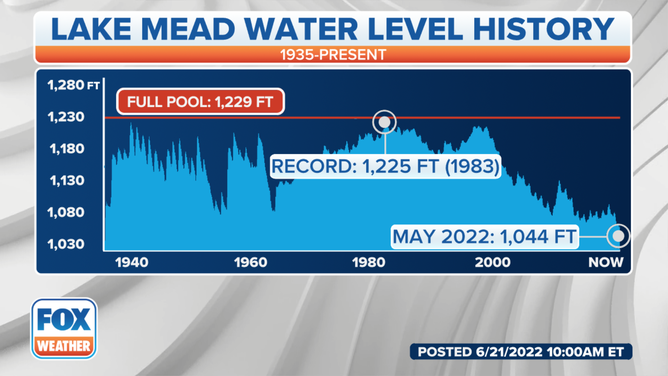
After a record, nearly full pool, in 1983, water levels in Lake Mead have dropped to the lowest since 1935.
(FOX Weather)
"Lake Mead and Lake Powell were built for significant storage on the Colorado River. They were actually designed to supply water for four years. And we're in the 23rd year of drought, and we've been able to manage the water, to be able to keep delivering, for all of this time," said Aaron, positive about the future of the reservoirs. "And they are low, but they have done what they were designed to do."
